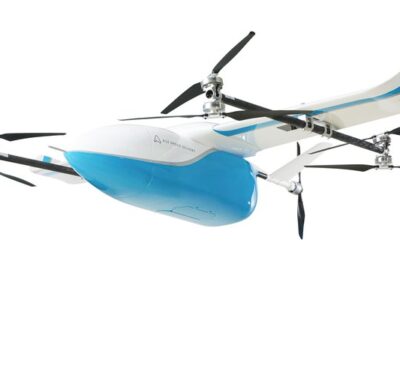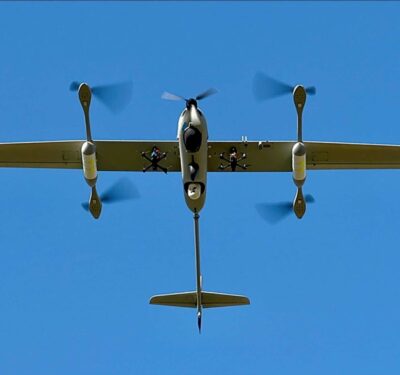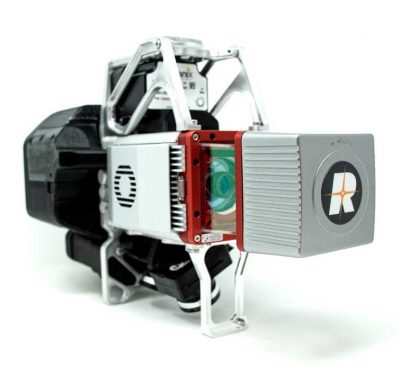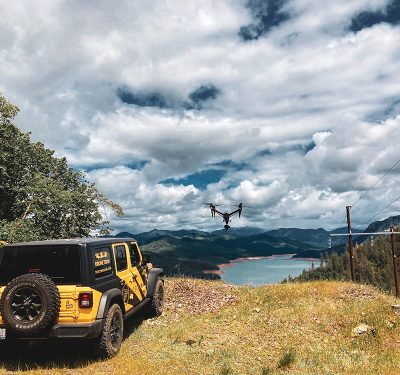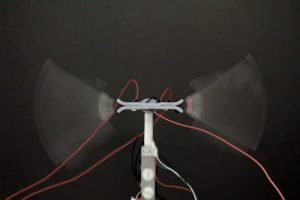
Front view of the flying robot. Credit: Tim Helps
Insect-size robots can use electric fields to fly with flapping wings without the need for conventional motors and gears, a new study finds.
Potential future applications for such robots may include autonomous inspection of off-shore wind turbines, search-and-rescue missions, plant pollination and remote exploration, the researchers noted.
Compared with commercial drones that rely on spinning propellers, micro-air vehicles (MAVs) that fly using flapping wings are better at maneuvering in tight spaces and resisting air turbulence.
However, until now, such wings used the motors and gears that make up transmission systems to perform such flapping, which added complexity, weight and other undesired features. Indeed, transmission systems alone may comprise about one-quarter to one-half of a MAV’s total mass.
Taking inspiration from bees and other flying insects, scientists have developed a new way for MAVs to flap their wings that uses no rotating parts or gears.
The new system, called the liquid-amplified zipping actuator (LAZA) uses electric fields to drive the motion of its wings. A voltage applied to the top of the base of the wing makes it flex up, while a voltage applied to the base’s bottom makes the wing curve down.
“With the LAZA, we apply electrostatic forces directly on the wing, rather than through a complex, inefficient transmission system,” study lead author Tim Helps at the University of Bristol in England said in a statement. “This leads to better performance, simpler design, and will unlock a new class of low-cost, lightweight flapping micro-air vehicles.”
All in all, the researchers found LAZA could travel up to about two feet per second, providing more power compared with insect or bat muscles of the same weight. It also displayed a thrust-to-power ratio comparable to those found in standard MAVs with transmission systems, as well as commercial drones. LAZA could also deliver consistent flapping over more than one million cycles, important for making flapping robots that can undertake long-haul flights.
“LAZA is an important step toward autonomous flying robots that could be as small as insects,” study senior author Jonathan Rossiter at the University of Bristol in England said in a statement.
The scientists detailed their findings online Feb. 2 in the journal Science Robotics.


